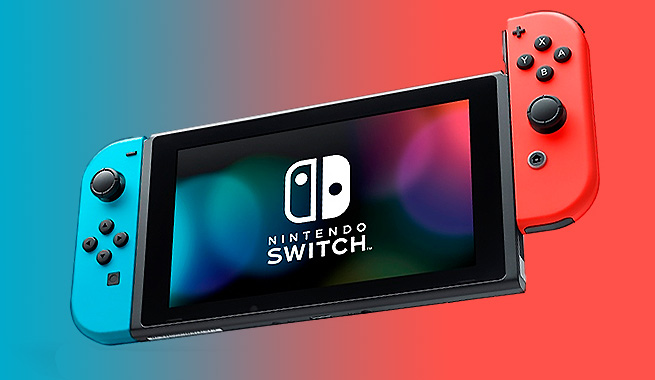For parents everywhere, the Nintendo Switch is more than just a gaming console; it's a bridge to family fun and shared entertainment. However, as a child gets immersed in the vast world of The Legend of Zelda or races to the finish line in Mario Kart, a series of real-world concerns quickly follows: How much screen time is too much? Are they being exposed to age-inappropriate content? Who are they interacting with in online games?
These are all valid and reasonable concerns. Fortunately, Nintendo provides a powerful set of Nintendo Switch parental controls to serve as your first line of defense. But how effective are these native tools, really? Do their protections have critical blind spots?
This definitive guide will provide you with a one-stop solution. We will begin by breaking down, step-by-step, how to set up and make the most of all the Switch’s built-in parental controls. Now, keep reading.

Table of Content
Part 1: The Modern Parent's Dilemma: Ensuring Child Safety on Nintendo Switch
The release of a new game or the persistent requests from a child often culminates in the purchase of a Nintendo Switch, a console celebrated for its family-friendly entertainment. However, for many parents, the initial excitement is quickly followed by a pressing concern: in an increasingly connected world, how can one ensure their child is truly safe while gaming? Questions about excessive screen time, exposure to inappropriate content, or interaction with strangers online are valid and common. While Nintendo provides a set of parental controls, understanding their full scope—and their limitations—is the first step toward creating a secure digital environment for the family.
Part 2: Your First Line of Defense: Setting Up Nintendo's Native Parental Controls
Nintendo has developed a robust set of foundational tools that every parent should implement. For maximum efficiency, these settings are best managed through the free Nintendo Switch Parental Controls app, available on iOS and Android smartphones, which links directly to the console.
Here is a clear, step-by-step guide to configuring these essential controls:
Step 1: Download the App and Link Your Account
Begin by downloading the "Nintendo Switch Parental Controls" app from your phone's app store. You will need a Nintendo Account to proceed. Once the app is installed, follow the straightforward on-screen instructions to link your account to your family's Nintendo Switch console using a simple registration code.
Step 2: Establish Daily Play Time Limits
One of the most valuable features is the ability to manage screen time. The app allows you to set a specific daily time limit (e.g., 1 hour on school nights, 2 hours on weekends) and even a "Bedtime Alarm" that suspends gameplay after a designated hour. The app also provides detailed reports on which games are played and for how long, offering valuable insights for parent-child discussions.
Step 3: Restrict Game Content by Age Rating
To prevent access to age-inappropriate games, the app allows you to select a restriction level based on standard ESRB ratings suitable for your child's age (e.g., "Child" or "Pre-Teen"). This setting automatically blocks any software exceeding the chosen rating. For greater flexibility, parents can also "whitelist" specific games, overriding the general restriction for titles they have personally approved.
Step 4: Control Online Spending and Communication
To prevent unauthorized purchases, parents can disable or password-protect all transactions on the Nintendo eShop. This is managed through your main Nintendo Account settings on a web browser. Furthermore, to protect children from unsolicited contact, the ability for a user to send and receive messages or images within games can be restricted.
How to set up Nintendo Switch parental controls?
Part 3: An Expert Analysis: Critical Gaps in Switch's Native Controls
While Nintendo's controls are commendable, a deeper analysis reveals several critical gaps that tech-savvy children might exploit or that simply fall outside the console's ecosystem.
Limitation 1: Console-Wide Time Limits: The play-time limit is applied to the console as a whole, not to individual user profiles. In households with multiple children sharing one device, this makes it impossible to allocate separate time allowances, often leading to disputes.
Limitation 2: Exposure in the eShop: Although purchases can be blocked, children are still able to browse the entire eShop. This means they can view trailers, images, and descriptions for mature-rated games, potentially sparking interest in inappropriate content.
Limitation 3: Potential for PIN Bypass: Determined children can find tutorials online explaining how to bypass the parental controls PIN. A compromised PIN renders all settings ineffective, highlighting the need for a more comprehensive security strategy.
Limitation 4: Unfiltered Third-Party Apps: The Nintendo Switch offers apps like YouTube and an integrated web browser. Critically, Nintendo's parental controls do not filter or monitor the content viewed within these applications. A child can seamlessly move from a G-rated game to unmonitored, potentially harmful, online videos.
Limitation 5: The Off-Console Ecosystem: A child's gaming life extends far beyond the Switch. It involves watching streamers on Twitch, discussing strategies on Discord, and following gaming content on TikTok or YouTube—all activities that typically occur on a smartphone or tablet. Nintendo’s controls have no jurisdiction over this wider, and often riskier, digital environment.
Part 4: Supplementing Native Controls with FamiSafe
Addressing the limitations identified requires a broader approach. The most effective strategy involves complementing Nintendo's on-device controls with a comprehensive solution that manages a child's entire digital footprint, particularly on their personal phones and tablets. This is the role FamiSafe is designed to fill.
It is essential to understand: FamiSafe does not directly interface with or control the Nintendo Switch console. Instead, it serves as a vital second layer of defense, managing the devices where the spillover from gaming culture—both positive and negative—actually happens.
- Set Screen Time & App Rules
- Capture Instant or Scheduled Screenshots
- Web Filter & Safe Search
- Location Tracking & Driving Report
- App Blocker & App Activity Tracker
- YouTube History Monitor & Video Blocker
- Social Media Texts & Porn Images Alerts
- Available on Multiple Platforms
Here is how FamiSafe addresses the gaps:
YouTube Monitoring and Content Filtering: For the YouTube app on a phone or tablet, FamiSafe can monitor viewing history, block specific harmful channels or videos, and even alert parents to searches for dangerous keywords (e.g., "cyberbullying," "violence").
Cross-Device Screen Time Management: FamiSafe allows parents to set screen time rules and schedules across all of a child's devices (phone, tablet, computer). This prevents the common issue of a child simply switching to their phone after their console time limit has been reached.
Web Filtering and App Blocking: FamiSafe's Web Filter can block access to inappropriate websites on a child's phone, while the App Blocker can be used to manage or restrict access to social gaming apps like Discord or Twitch, ensuring a safer Browse and social experience.
Location Tracking for Peace of Mind: Features like real-time location tracking provide an added layer of security, allowing parents to know their child is safe when they are at a friend's house for a gaming session.
This two-pronged strategy—using Nintendo's app for on-console rules and FamiSafe for the surrounding digital environment—provides a truly comprehensive and realistic safety solution for modern families.
Conclusion
Effectively managing a child's digital safety in the gaming world requires a proactive and informed approach. The Nintendo Switch's parental controls offer a powerful and essential first step, allowing parents to set firm boundaries for game content and playtime on the console itself. However, as our analysis shows, these controls have inherent limitations. True digital safety is achieved by extending protection beyond the console to the phones and tablets where modern gaming culture thrives. By pairing Nintendo's native tools with a comprehensive solution like FamiSafe, parents can create a robust, multi-layered safety net that protects their children wherever they go online, ensuring their gaming experience remains positive and secure.
FAQs of Nintendo Switch's parental controls
-
How can I block one specific game on the Switch?
In the Nintendo Parental Controls app, you can set a general age restriction. To block a specific title that falls within the allowed age range, the most effective method is to use the "Whitelist" feature to approve only the games you want your child to play, thereby excluding all others. -
Is it possible for a child to get around the Switch's parental controls?
Yes. If the PIN is discovered, all controls can be disabled. Online tutorials also exist for more technical bypass methods. This is why relying solely on the on-device PIN is not a foolproof strategy. -
How do I prevent my child from spending money on the Nintendo eShop?
This must be done via your Nintendo Account on a web browser. Navigate to "Family Group," select the child's account, and enable "Spending Restrictions." This will require the parent's account password for any purchase. -
Can I set unique time limits for each of my children on the same Switch?
No, this is a key limitation. The daily time limit is console-wide and does not differentiate between user profiles. -
Should I be concerned about the web browser on the Switch?
Yes. While its access is limited, the browser can be used to navigate to websites. Content viewed through this browser is not filtered by Nintendo's controls, representing a potential blind spot for parents.



